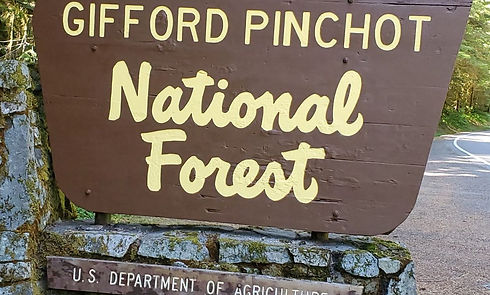Gifford Pinchot National Forest

Planting in this forest.
In 2023, Gifford Pinchot National Forest undertook the first phase of the Big Hollow Fire Reforestation project, focusing on areas impacted by the 2020 wildfire that burned over 24,000 acres. The reforestation effort aimed to restore forest cover and improve ecosystem resilience by planting 200,000 tree seedlings across the affected landscape. Native species such as Douglas-fir, western hemlock, and western red cedar were carefully selected to ensure long-term adaptation to the region’s environmental conditions and to enhance biodiversity. The reforestation not only aimed to restore lost vegetation but also to stabilize the soil, prevent erosion, and provide essential habitat for wildlife that depend on the forest for survival.
In 2020, restoration efforts concentrated on the upper slopes of Mount Adams, where 120,000 trees were planted across 800 acres as part of the ongoing recovery following the 2012 Cascade Creek Fire. This project introduced a diverse mix of fire-resistant species, including western larch, subalpine fir, mountain hemlock, lodgepole pine, and Engelmann spruce. The restoration was designed to support the recovery of critical wildlife habitats, such as those of the northern spotted owl, and to protect the headwaters of the White Salmon River, which play a crucial role in maintaining regional water quality and fish habitat.
The reforestation efforts in 2019 focused on restoring fire-damaged areas on Mount Adams, with the planting of 20,238 trees. This effort was a continuation of the long-term commitment to rehabilitate the landscape affected by past wildfires. The initiative emphasized the importance of reintroducing native tree species that can withstand future disturbances and contribute to the overall ecological health of the region.




Location
Washington, USA
Project Type
Reforestation
Environmental Benefits
Soil stabilization
Water quality improvement
Wildlife habitat restoration
Carbon sequestration
Biodiversity conservation
About this forest
Gifford Pinchot National Forest, located in Washington state, spans over 1.3 million acres of diverse landscapes, including old-growth forests, volcanic peaks, and pristine rivers. It provides critical habitat for wildlife such as the northern spotted owl and elk while offering recreational opportunities like hiking, camping, and fishing. Ongoing restoration efforts aim to enhance forest health and resilience to natural disturbances.




